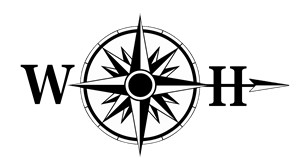Win A Marine Archaeology Course
In The Caribbean
Worth More Than £2,000
(Click here for further information)
Article #4
| Title: | Surveying An Archaeological Site Underwater |
| Produced By: | Mike Haigh (Project Director Wreck Hunters) |
So, you have found a wreck of archaeological interest, either by extensive research and exploration or just by chance. So, what now?
The first activity in the investigation of a site is what is called a pre-disturbance survey. The objective of this survey is to record the site as it is, including all topographical information and all other useful data, in order to tell ‘the story so far’. From this data, a more detailed survey of the wreck can be planned as well as any further investigative processes on the site. This may include excavation. The basic requirement is the production of an accurate three-dimensional picture of the area, recorded as a two-dimensional plan with supporting descriptions and measurements.
So, what methods and techniques can we use to meet this objective? One big factor here is visibility; if you are working in clear warm water then you have a choice of many methods.
If you are working in a low visibility situation your options will be more limited. The type of seabed will be another factor, as will the type of wreck itself. It is straight forward enough to establish a grid around a site which is predominantly horizontal with a few exposed timbers. It is a totally different Diver using a slate to draw marble blocks at site of Isola Della Correnti story if your wreck is a jumble of huge marble blocks. So, as ever in diving archaeology your approach must be flexible.
As anyone who has done any relatively complex tasks underwater knows, it is much easier to plan a certain activity underwater than to do it. My advice is – as far as it is possible – to practice all procedures on dry land first!
Allowing for individual circumstances I would list ten key activities, that when combined, will allow you to collect enough information on your site to move forward.
- The establishment of a grid of fixed points which act as a reference point from which survey measurements can be taken. The grid needs to encompass the whole site if possible, with a margin of at least one metre around it. Basically, what you end up with is your wreck site divided up into grid – squares which are numbered. Think rope/cord here rather than anything more permanent.
- Setting up a baseline either following part of the visible remains of the wreck such as the keel or through the centreline of the gridded area.
- Produce an outline plan of the site using measurements taken from the baseline and the grid.
- Using a compass and tape measure, record the orientation of the grid and the wreck itself.
- Make a sketch of the site and any other visible parts of the wreck. When the Studland Bay wreck was discovered in 1984, a member of the original Technical Committee made a sketch of the site. When compared to the photomosaic made three years later the sketch proved to be remarkably accurate.
- Make a contour plan of the gridded area using grid intersections and an accurate measuring device.
- Produce a probe survey of the site. Same method as for the contour plan but this time getting some idea of the depth of material covering the remains.
- Detailed drawings of visible remains of the wreck using planning frames along with photography of these areas – do not forget to use a scale.
- Photographic and video recording. If the visibility is very good a basic photomosaic can be produced.
Metal detector survey – if you are fortunate enough to access to one. Set up lines within each grid along which the coil can be directed. Great for indicating where metallic remains may be located.
The key point is that you need to record RELATIONSHIPS not MEASUREMENTS. Get lots of sketches and photos. Just taking a lot of measurements is what is called Cultural Resource Management. Archaeology is about stratigraphy not just measurements. You are possibly recording the remains of a once proud vessel. A part of maritime history – you need to bring it back to life!
Of course, there is the option to survey the site electronically. This of course has a cost implication. You could set up an array of transponders around the site sending sonar impulses back and forth. Modern side scan sonars can produce a contoured plan picture which is a sort of survey.
We are here talking about an initial survey so I think we can leave the discussion about the use of acoustic positioning systems in archaeology to another day. Next time we will be looking at how underwater metal detectors can be applied to assist the diving archaeologist.
Until then I wish you enjoyable and safe diving.
Mike
